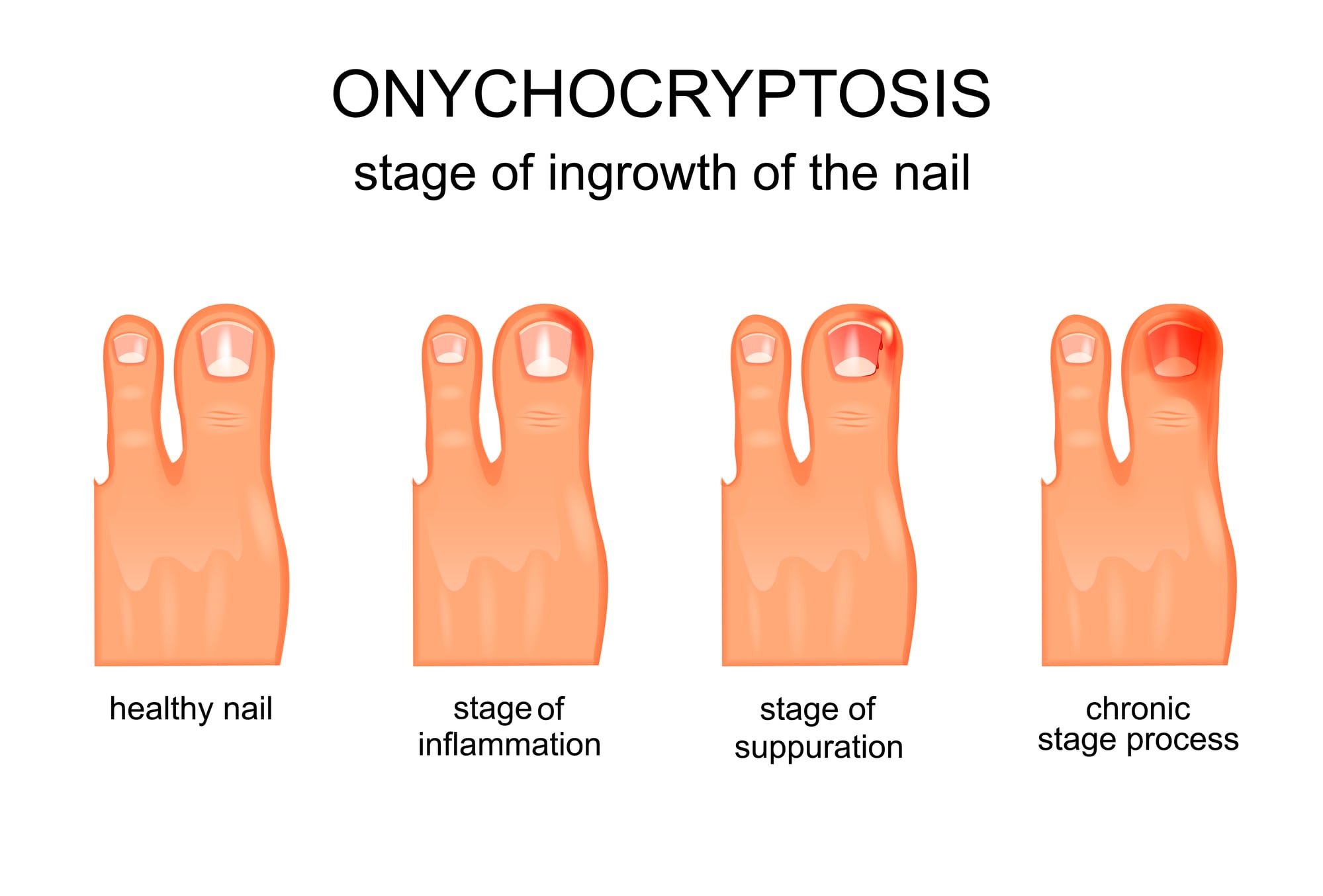
Ingrown toenails are common and can develop quickly. Ingrown nails happen when your nail grows into your skin instead of over it. This happens more with toenails than with fingernails and is especially prevalent on big toes. An ingrown toenail will not go away on its own; though oftentimes, an ingrown toenail can be treated at home, some cases may call for a podiatrist’s expertise
Swelling, tenderness, and warmth are usually the first symptoms of an ingrown toenail. One might then see inflamed and overgrown skin at the tip of the toe. If the nail is cutting into the skin, bacteria can get into the toe, which may cause an infection. The ingrowing toenail may also leak blood and white or yellow pus, or fluid may build up in the area.
No. If you have an ingrown toenail, it should be treated as soon as possible to prevent symptoms from worsening. A podiatrist can diagnose an ingrown toenail with a physical exam and in the process rule out something more dangerous.
There are fairly easy ways to treat a mild ingrown toenail at home. Individuals can try soaking the infected foot in warm water, with Epsom salt, three or four times a day, keeping the foot and infected area in particular clean and dry at all times in between soaking. People should wear comfortable shoes that leave space for toes, such as sandals. Ibuprofen or acetaminophen may relieve mild pain. Do not repeatedly trim your nail around the border or cut a notch in the nail as this will not prevent it from curving downward. Do not place cotton under the nail as this will invite bacteria and increase the risk of infection. Over-the-counter toenail medication may be harmful as it will mask the pain without treating the root cause of the problem.
However, if you suspect an infection, or if you have diabetes, circulation problems, or numbness in the toes, skip the home remedies and see your clinician or a foot specialist immediately. Alternatively, if your toenail isn’t better after three to five days of conservative at-home care, you should see a podiatrist. An ingrown toenail won’t go away on its own. We welcome “at-risk” clients, this simply means that we welcome people with diabetes, circulation problems, celiac disease, kidney disease, and neuropathy. We offer a safe place to get a medical nail trim.
At Corona Foot and Ankle, one of our doctors will anesthetize the toe and then avulse and remove the incurvated nail. At this point, a patient may have the option to permanently remove that portion of the nail by having the doctor introduce a chemical into the nail bed that kills the matrix tissue to prevent it from growing back. This procedure is highly recommended for patients with reoccurring ingrown toenails.
Ingrown toenails can be caused by a variety of issues. Improper footwear is a common culprit; shoes and socks that are too tight and crowd the toes and toenails increase the chance of an ingrown toenail. Individuals with poor foot hygiene or excessive sweating, such as some athletes, will create a moist and warm environment in which there is a higher chance of developing an ingrown nail. A toenail injury, such as kicking something too hard or dropping something on your nail, can lead to ingrown toenails. Cutting a toenail too short or improperly may also lead to an ingrown nail, which is why especially patients with diabetes or peripheral vascular disease should be extremely careful and see a podiatrist for regularly professional trimming.
To learn more about our podiatry clinic, treatment options, or to book an appointment, contact Corona Foot and Ankle here.
Have any questions about treatment? Feel free to make an appointment, Our team will reach you soon!
Contact Us